Best Live Chat For E-commerce: Our 12 Top Picks

Keeping your customer at the heart of your business is one of the key success factors for ecommerce. This means doing everything in your power to entice leads into becoming customers, and then providing great customer service once they are.
Live chat is a fantastic feature for any ecommerce website that can help you achieve both of these goals. But what exactly is live chat? How does it work, and how can you make the most out of it? Let’s investigate.
What is Live Chat?
Sometimes technology is incredibly complicated. But sometimes, (as in the case of the world’s first computer bug), things are exactly what they sound like. ‘Live chat’ is exactly that: a chat that takes place on your website, in real time.
Live chat is a great way to communicate with your customers. It gives visitors to your website a quick and easy way to speak to you and get answers to their questions. Customers can simply start typing in a chat box or chat window, send their message, and wait for a reply.
It’s often a lot faster than making contact through email or over the phone, and many customers prefer it when given the choice, especially younger users. Not to mention the increase in scams like vishing, meaning that phone calls are less secure than ever for sharing personal information.
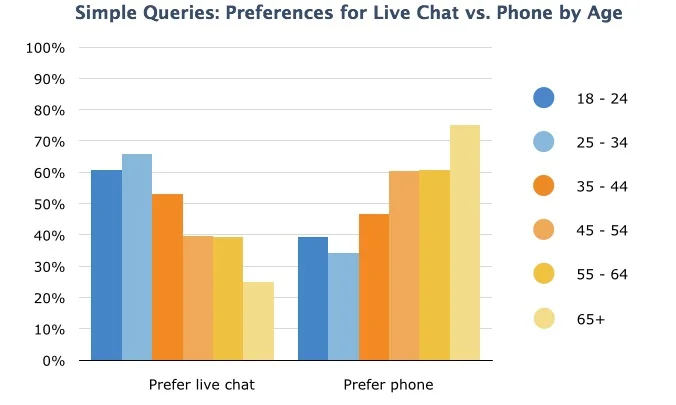
Another reason visitors like to use live chat is its ease of use. There’s no need for the customer to install special software or sign up to any services – the live chat app is hosted on your website.
Most live chat apps will feature a live chat widget, usually appearing in a corner of the web browser and indicating to the visitor that live chat is available. They can simply click on this widget to activate a chatbox, and then chat away.
Why Do You Need Live Chat for Ecommerce?
There are many questions to consider when running an ecommerce store. Where should I be advertising? What is inventory accounting? The list goes on.
One of the questions you may forget to ask, however, is what can live chat do for my business? Well, there are numerous benefits to using live chat outsourcing for an ecommerce website, both for the customer and the retailer.
Firstly, live chat saves time. Customers do not need to interrupt their shopping experience to access live chat, as they can do so right from the product page. Customer service agents can similarly save time by dealing with multiple clients over live chat at once.
Answering customer’s queries quickly is especially important when they’re considering a purchase. Any hesitation by a customer can quickly lead to them changing their mind and leaving the site altogether. Quicker responses can therefore reduce cart abandonment rates.
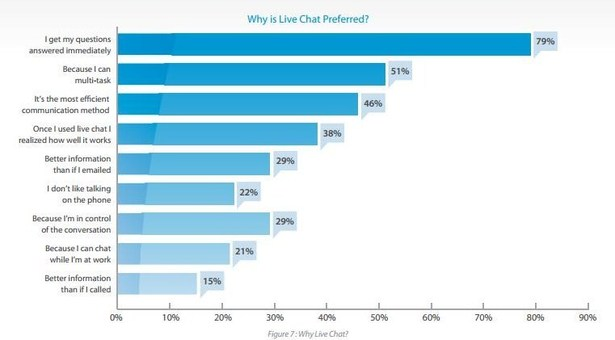
Live chat adds a human touch to your ecommerce store. Being able to access live chat is akin to asking for help from a sales assistant in a brick and mortar store, and can be very reassuring to customers.
Finally, live chat can provide valuable insights into your customer’s behaviors alongside other real time data analytics. You can analyze when your customers decided to access live chat in order to identify pain points in the customer journey on your website.
You can also use live chat as a way to gather customer feedback, providing further insights into the shopping experience you provide.
Top 12 Live Chat Tools For E-commerce In 2025
1. Help Scout
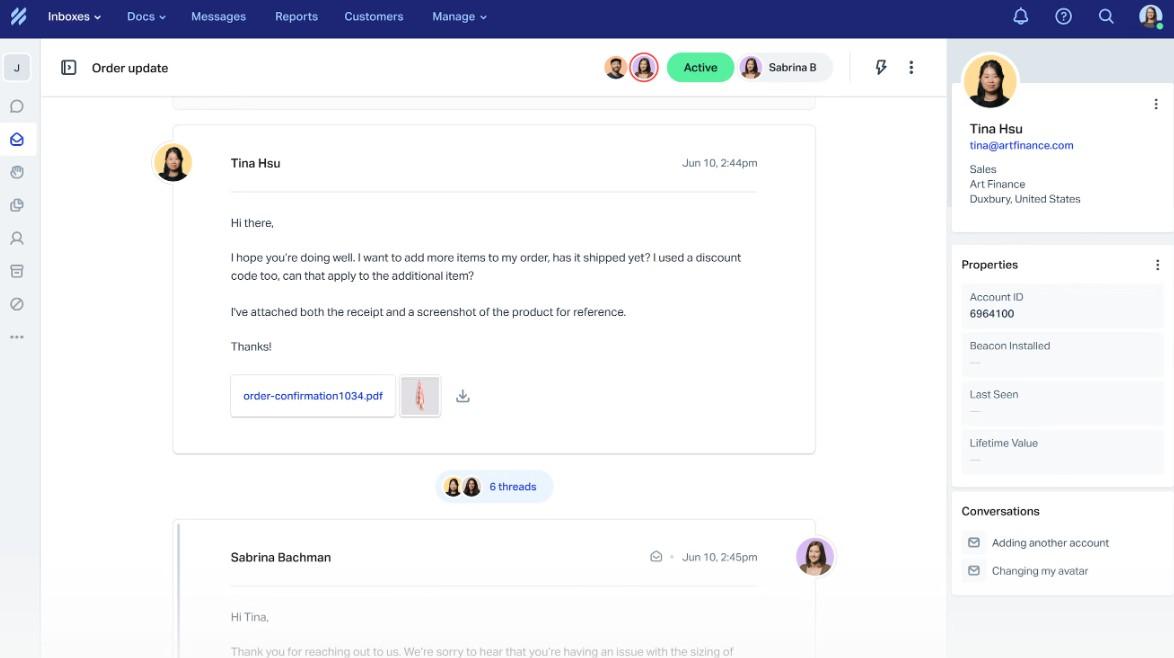
Help Scout is one of the best tools for customer service because it lets people get help quickly. People can talk to a live chat person or read articles in the help center without leaving the chat box.
Help Scout lets customers get immediate responses to their questions through self-service and fast chat. It tells customers what articles to read based on the page they are on, so they don’t have to look for them. Anytime they can’t find an answer, they can talk to a support person right away.
Outstanding features:
- Instant messaging and self-service options for quick answers
- Intelligent article recommendations based on browsing activity
- Multi-channel support with Beacon: live chat, email, knowledge base, and in-app messaging all in one
- Seamless email communication directly from the chat window
- Customizable support with trigger-based messaging and AI capabilities
Price:
- Standard plan: $20 per month
- Plus plan: $40 per month
- Pro plan: $65 per month
2. LiveChat
LiveChat’s goal is to boost your sales and give you a real-time view of your progress as you manage the world of e-commerce. LiveChat makes it easy to promote your goods, get useful information about your customers through pre-chat polls, and handle boring jobs with its smart robot by connecting smoothly with your business systems.
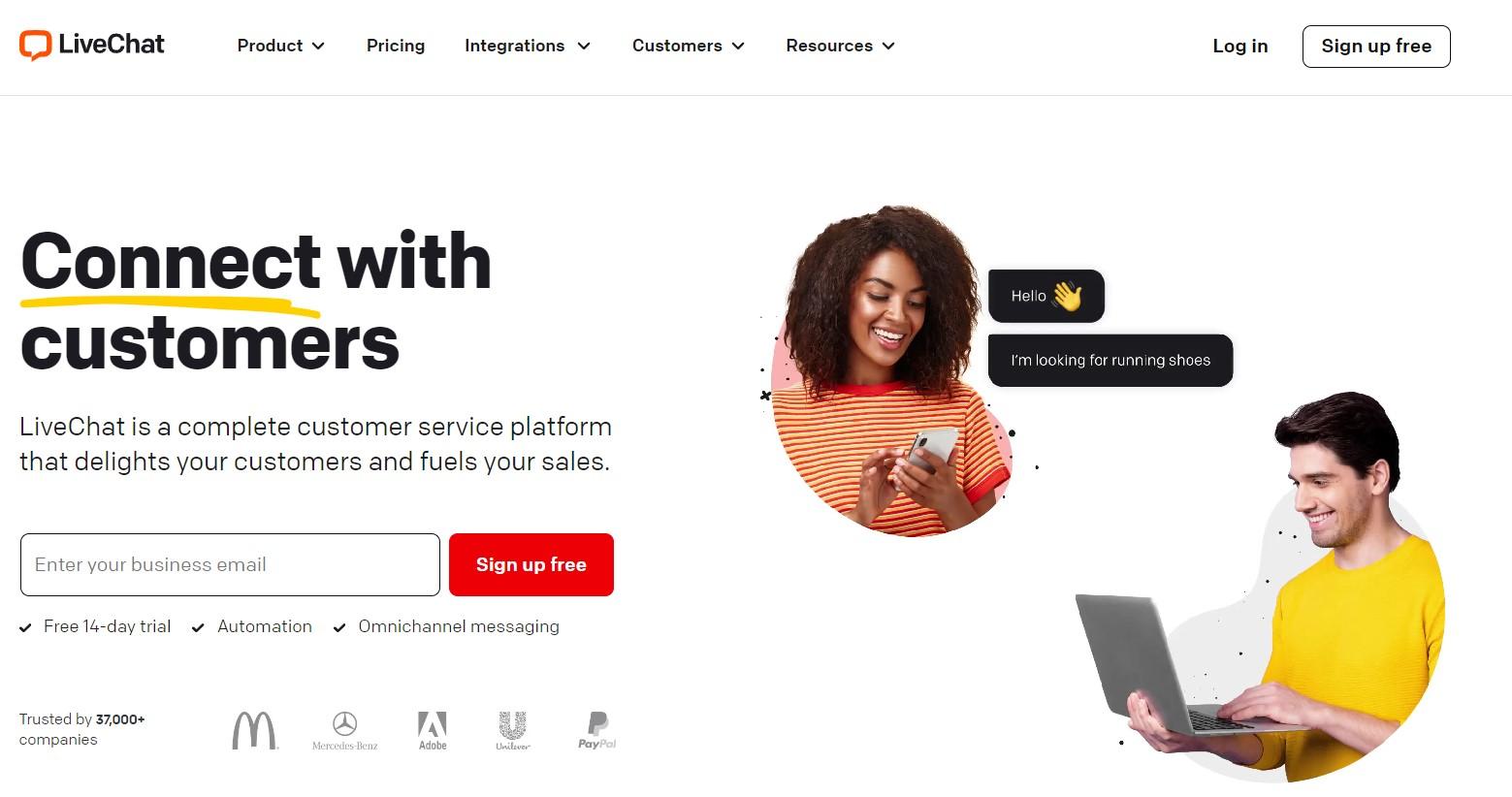
E-commerce businesses can use LiveChat’s powerful set of features to increase sales and make customers happier. By using planned replies to quickly answer common questions and sharing product cards during talks to entice potential buyers, you can make sure that customers have a smooth and seamless shopping experience.
Outstanding features:
- Seamless integration with e-commerce platforms
- Ability to promote products directly through the live chat interface
- Pre-chat surveys to gather valuable customer data
- Canned responses to streamline support team processes
- Ability to share product cards for easy product promotion in chat
- Streamlined support team processes
Price:
- Pro plan: $20 per month
- Plus plan: $41 per month
- Large plan: $59 per month
- Enterprise plan: contact for information
3. HelpCrunch
HelpCrunch has a live chat feature that you can change to fit your needs. It can be used on your e-commerce site or with Facebook Messenger. Its chat tool lets you change more than 20 things and has a custom CSS style, so you can easily make the pop-up match your brand and give your customers a better experience.
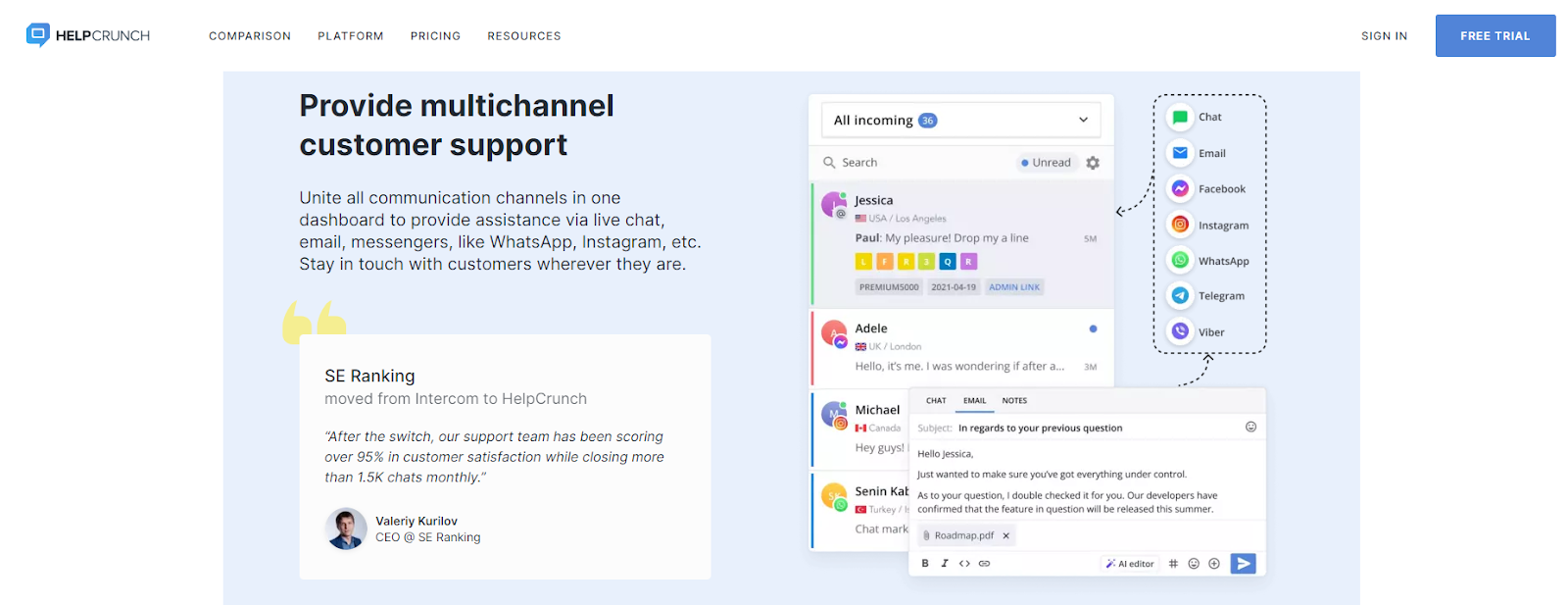
HelpCrunch also works with a lot of different platforms, like Shopify and WordPress, so it’s easy to add the app to your website and start providing live chat help.
Outstanding features:
- Customizable live chat with over 20 adjustable elements
- Seamless integration with e-commerce websites and Facebook Messenger
- Compatibility with popular platforms like Shopify and WordPress
- Custom CSS styling for brand consistency
Price:
- Basic Plan: $15 per user per month
- Pro Plan: $25 per user per month
- Unlimited Plan: $620 per user per month
4. Tidio
If you’re a small business owner looking to provide top-notch chat support on your website without breaking the bank, Tidio is the tool you’ve been waiting for. With its 100% free forever plan, Tidio is perfect for those who are just starting out and need a reliable live chat platform that won’t cost them a dime.
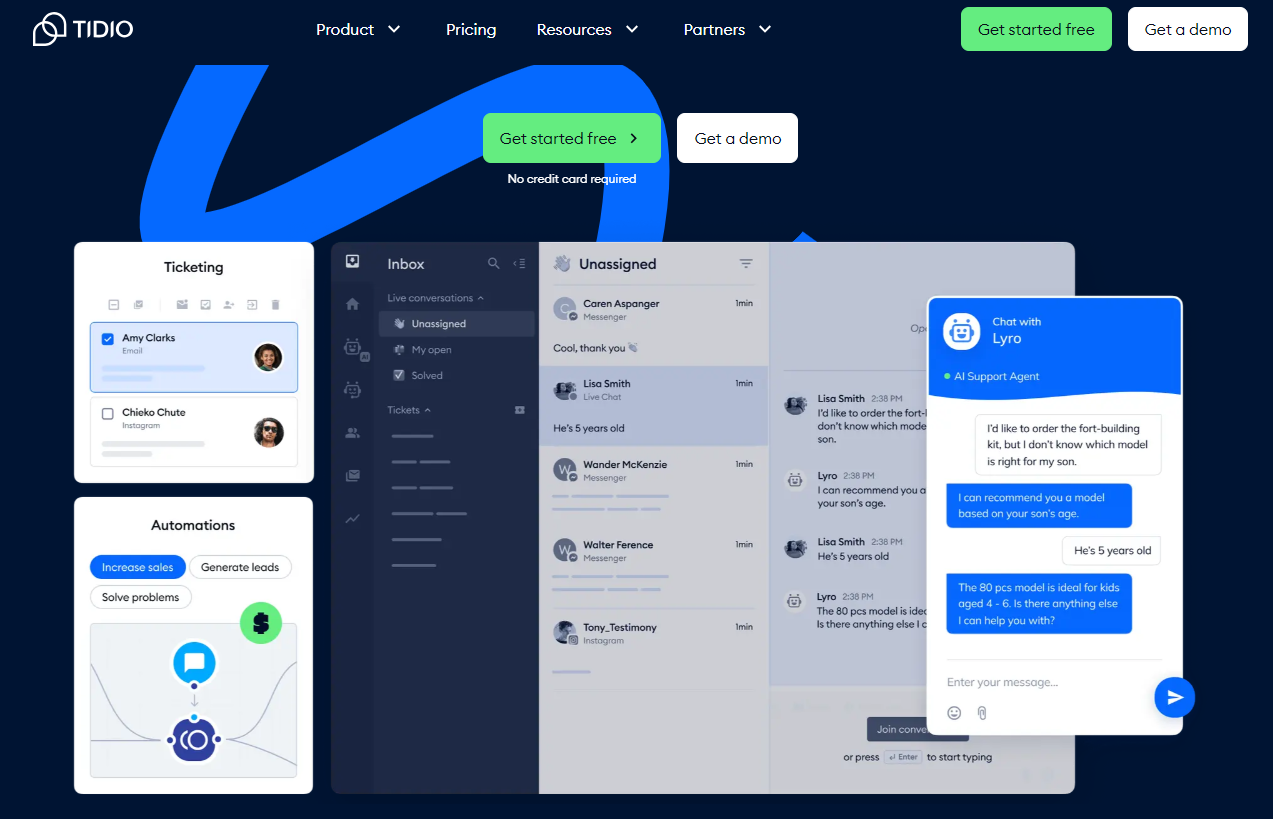
But don’t let its affordability fool you – Tidio is packed with features that rival even the most expensive live chat tools on the market. From event tracking to conversation ratings, Tidio has everything you need to provide excellent customer service and keep your customers coming back for more.
Tidio’s ability to automate conversations by making use of pre-set templates is one of the aspects that sets it apart from other similar applications. This not only reduces the amount of time it takes to respond to inquiries, but it also guarantees that your clients will get the information they are searching for as promptly as possible via this method.
Outstanding features:
- 100% free plan with no time limit
- Easy installation via plugin or JavaScript
- Wide range of functionalities
- Automation using pre-set templates
- Lightweight design
- Suitable for small businesses starting
- Excellent customer support
Price:
- Starter plan: $29 per month
- Growth plan: $59 per month
- Tidio+ plan: $398 per month
5. Olark
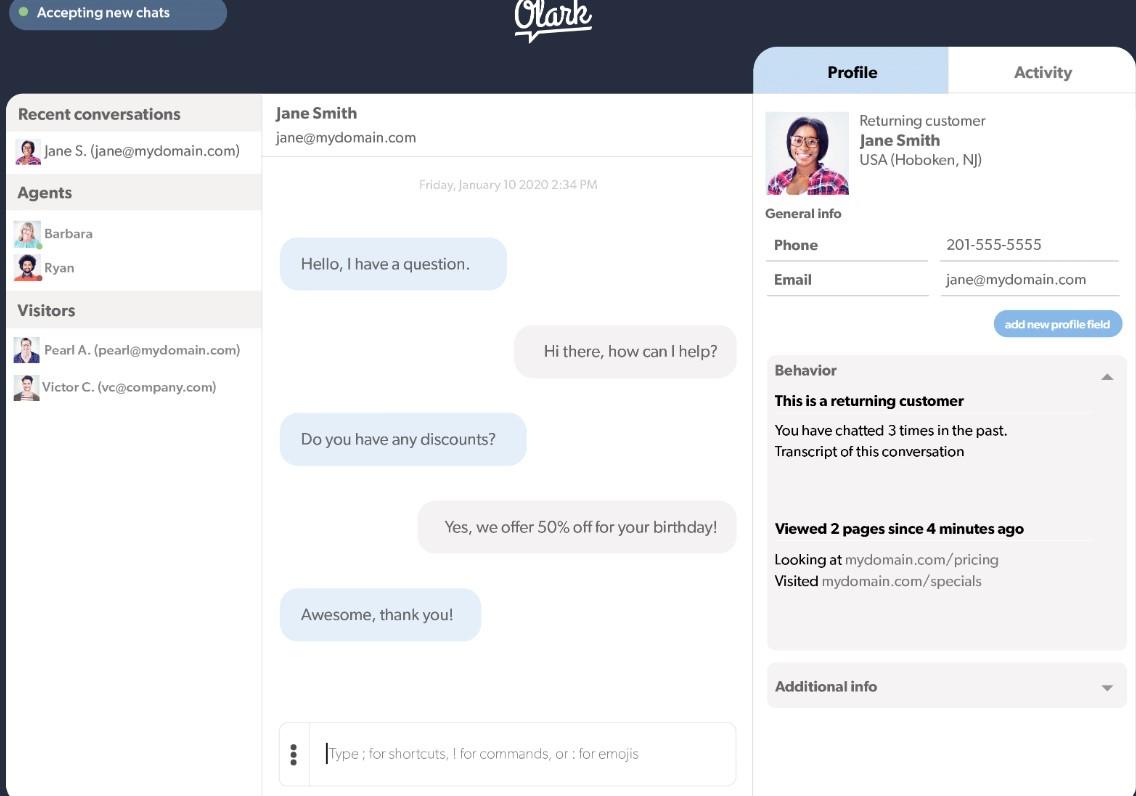
Olark is a live chat tool that was made perfectly for e-commerce websites The talks with customers are simplified, with an emphasis on ease of use and speed. Olark does one thing really well: it makes live chat run smoothly. It might not have all the features of a complete customer service tool, but it does what it does perfectly.
Outstanding features:
- Get the info you need right from the start.
- Engage customers with targeted messages and offers.
- Never miss a query, even when you’re not online.
Price:
- Plans from $29 per month
6. Intercom
With Intercom’s retail live chat software, it’s easy to answer those questions that your chat workers keep getting. Using saved answers can help you get more people to buy and keep them from leaving their carts, all while saving your customer service team time.
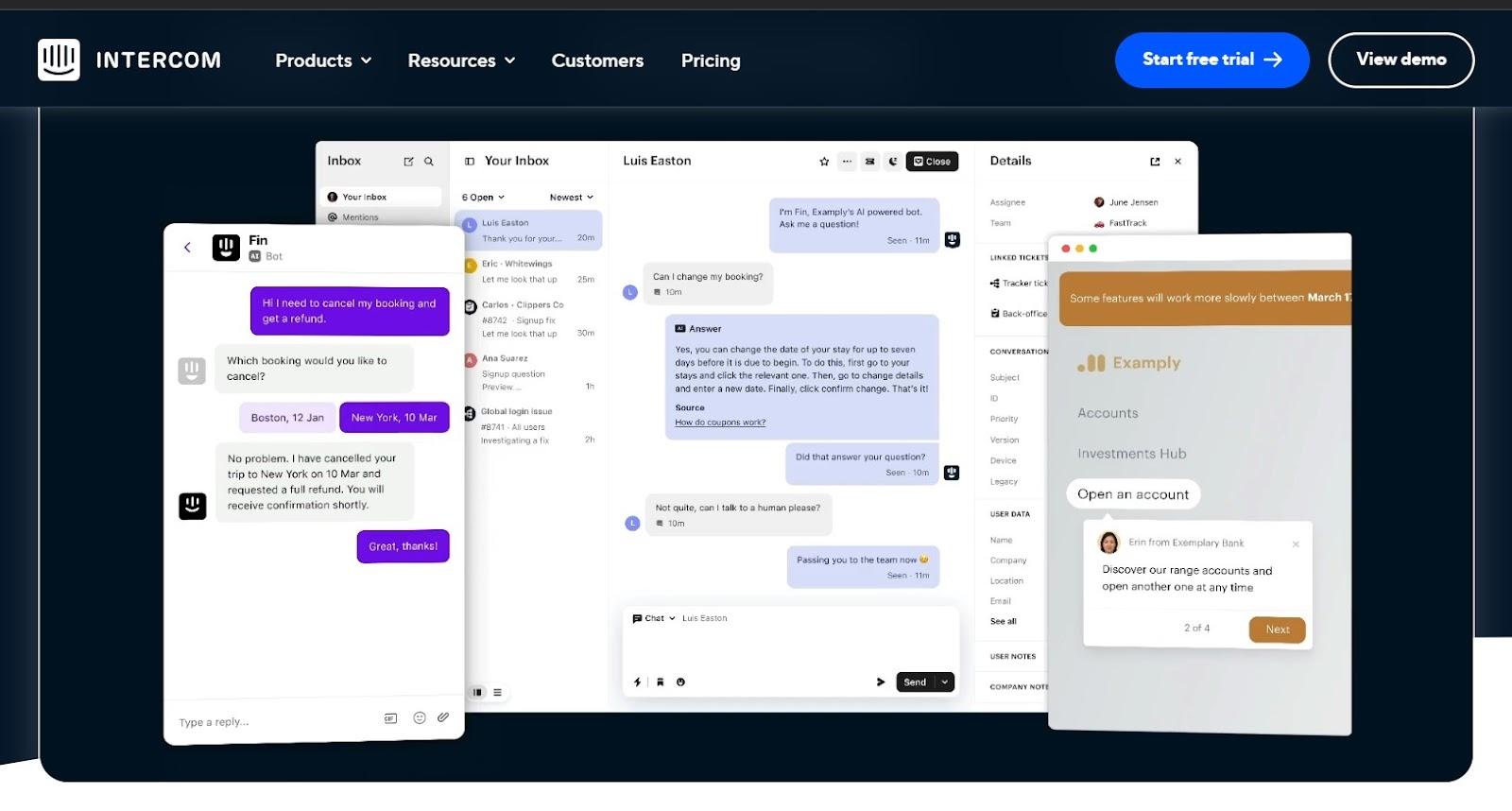
People can also use proactive chat buttons on custom bots to get replies to their questions. You can also connect Intercom to over 300 other apps that your sales, marketing, and customer service teams already utilize on your e-commerce platform.
Outstanding features:
- Streamline support with pre-defined responses.
- Proactively engage visitors and guide them to solutions.
- Seamlessly connect with over 300 popular tools.
Price:
- Essential plan: $39 per seat/ month
- Advanced plan: $99 per seat/ month
- Expert plan: $139 per seat/ month
7. ProProfs
ProProfs is a terrific live chat tool for getting approved leads, even if your customer service reps aren’t available. This lets you keep selling to those new leads, which will make them more likely to come back and complete their online shopping bags.

You can also use this feature to send your audience news about new products, future sales, and discount codes that can help you make more sales. A post-chat poll can help you get real feedback from your customers and keep making your live chat workers more popular.
Outstanding features:
- Customize the chat widget to match your website’s design.
- Use analytics and reporting to track agent and customer satisfaction.
- Support multiple languages for a global customer base.
- Integrate with popular CRMs and help desk software.
- A mobile-friendly chat widget ensures cross-device uniformity.
Price:
- Plans start at $19.99/operator per month
8. Freshchat and Customer Service Suite
Freshchat is one of a huge set of business tools that the company Freshworks has put out. You can use its retail live chat tool to talk to robots that are driven by AI, translate languages in real-time, and chat through other messaging apps like LINE, WhatsApp, Facebook Messenger, and Apple Business Chat.
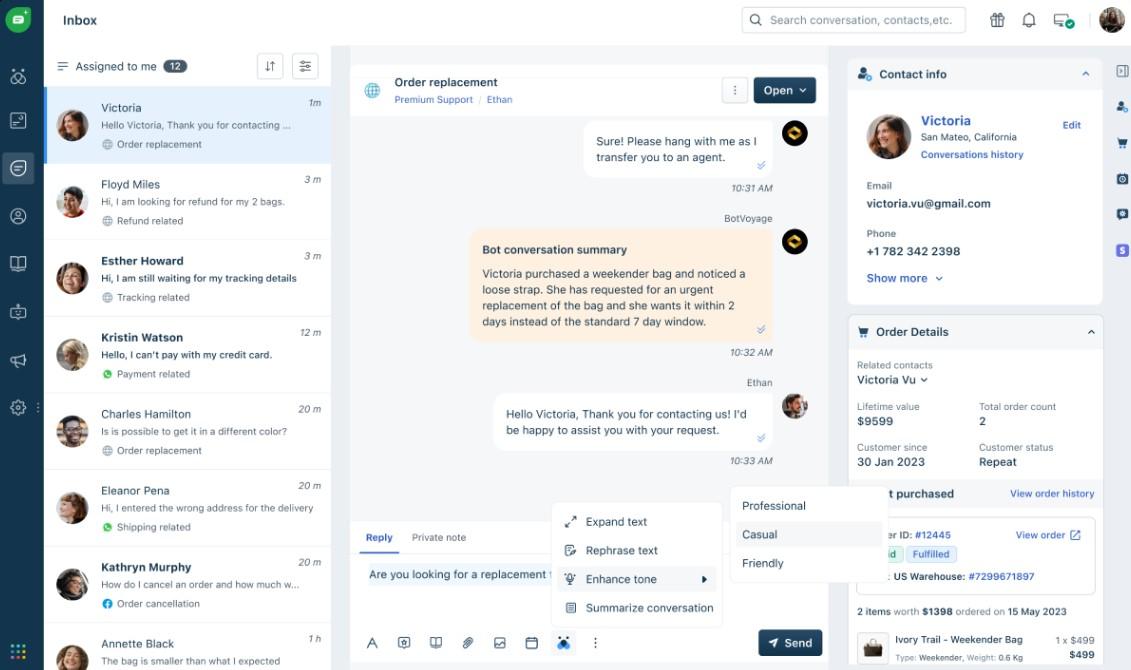
There are also over 1,000 different connections for Freshworks goods, so you can connect them to almost any tool your online shop already uses. You might want to sign up for Freshworks’Customer Service Suite if your business needs more than just chat help. Everything from Freshchat and their help desk software, Freshdesk, is in this one plan.
Outstanding features:
- Automated messages and chat bot customization
- Real-time analytics and reporting
- Multi-channel messaging (email, SMS, web, etc.)
- Customizable chat widgets and themes
- Integration with CRM software
- Advanced routing and prioritization of conversations
- Proactive messaging and targeted campaigns
- Customizable chatbots with AI and NLP capabilities
Price:
- Growth plan: $19/agent/month
- Pro plan: $49/agent/month
- Enterprise plan: $79/agent/month
9. LiveAgent
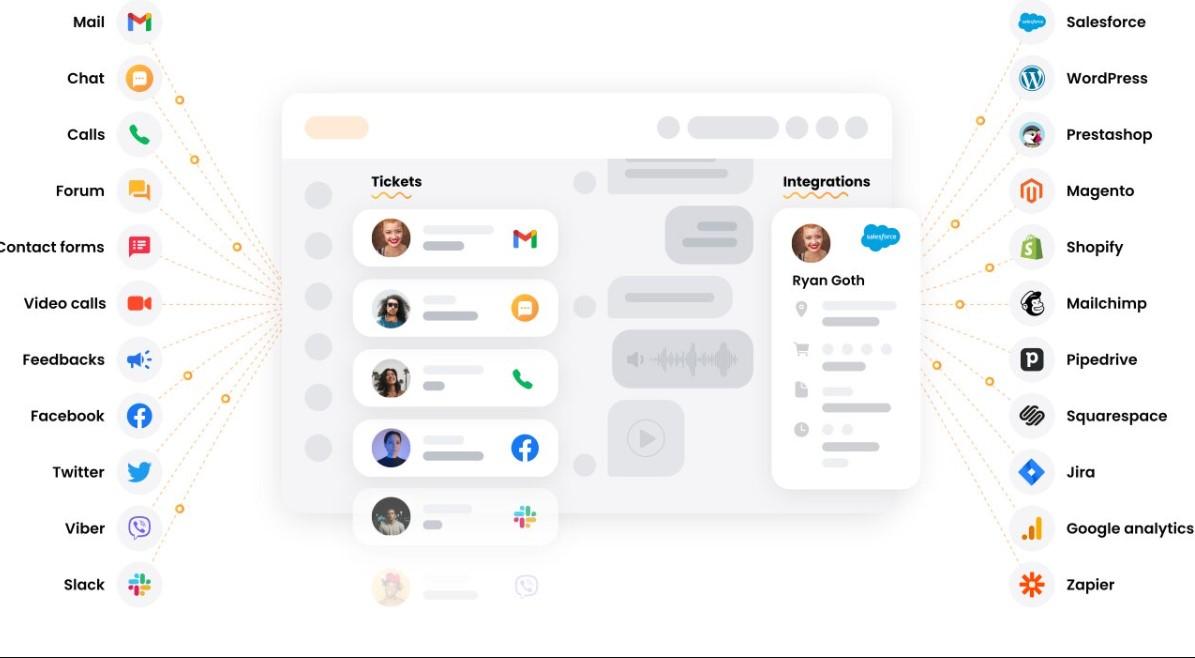
LiveAgent is the live chat tool you’ve been looking for if you’re a business owner who wants an easy and complete way to handle customer contact. You can get messages from email, form submissions, live chat, websites, and telephone calls, among other places, in this bidirectional chat solution’s shared folder. This makes it easy for your team to plan and handle customer questions, making sure that no email goes ignored.
Outstanding features:
Omnichannel chat option. All communications are organized in one common inbox. Proactive chat pop-ups for quick assistance. Real-time typing for immediate response. Localization support for multilingual communication.
Price:
- Small plan: $9/agent/month
- Medium plan: $29/agent/month
- Large plan: $49/agent/month
- Enterprise plan: $69/agent/month
10. Chaport
Chaport is a top live chat tool for e-commerce teams that work on helping problems together. By letting people switch between talks or join group chats, Chaport is all about making customers happy.
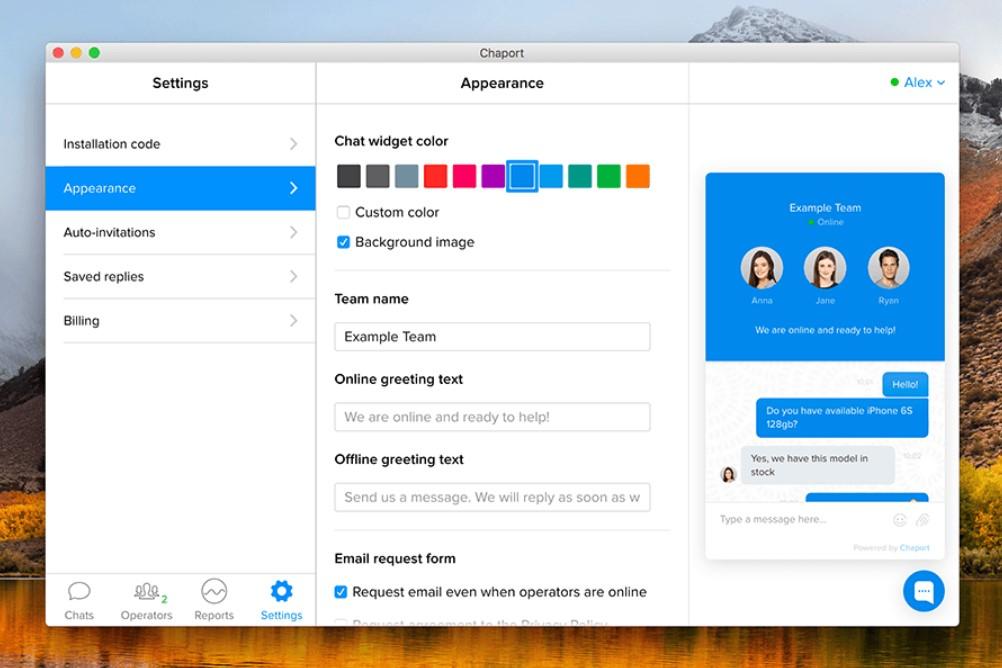
Chat agents can see what customers are writing as they type it, which is another great feature. This lets agents know what kind of answer they need to be ready before a client even sends the message. This is a huge step forward in cutting down on reaction times when pre-written replies and automation just won’t work.
Outstanding features:
- Customizable chat widget for brand consistency
- Real-time typing insights for faster responses
- Collect and respond to offline messages
- Easily transfer files during chat sessions
- Stay connected with the mobile app
- Access visitor information for personalized support
Price:
- Pro plan: $29 per month
- Unlimited plan: $99 per month
11. Zendesk
Zendesk is a powerful live chat tool designed for enterprise companies. It is part of a comprehensive suite of tools that cater to customer service and sales. The live chat feature is particularly useful for assisting customers, upselling products, and reducing cart abandonment.
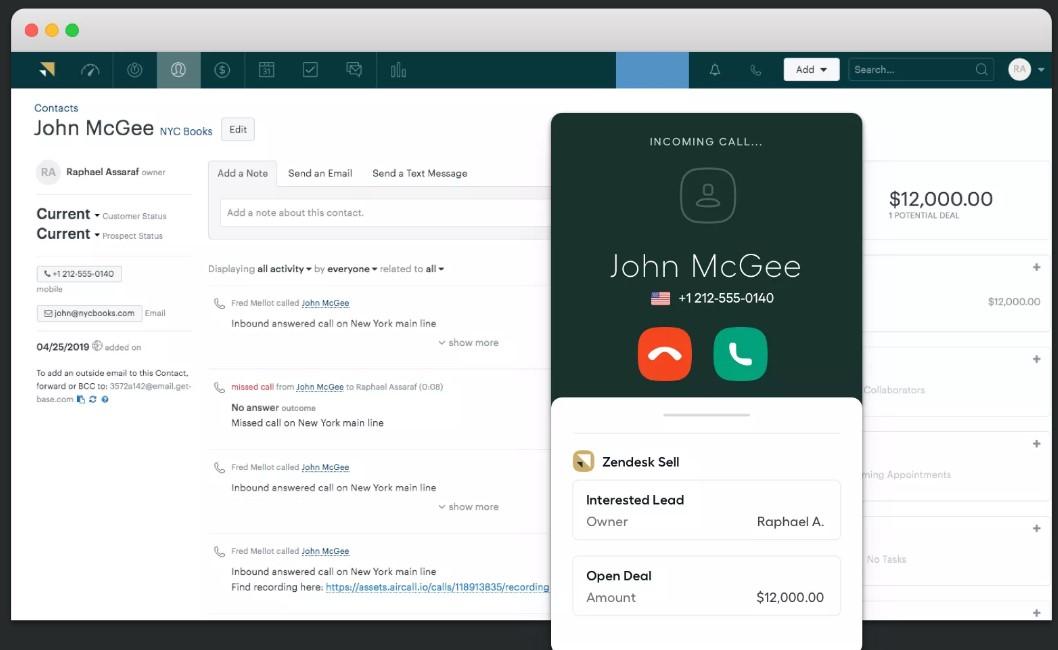
One of the standout features of Zendesk’s live chat tool is its automation capabilities. Users can set up proactive chat triggers to engage with customers at the right moment. This can help increase sales and improve overall customer satisfaction. Additionally, the tool offers canned responses, which can save time and ensure consistency in customer interactions.
Outstanding features:
- Automation capabilities for proactive chat.
- Canned responses for quick and consistent customer interactions.
- Multi-channel support (web, mobile, social media).
- Affordable pricing for enterprise companies.
Price:
- Team plan: $55/agent/month
- Growth plan: $89/agent/month
- Professional plan: $115/agent/month
- Enterprise plan: Custome pricing
12. Crisp
Crisp is one of the few live chat tools on the following list that has a free plan. This makes it a great choice for fresh or existing small businesses, especially those that need help from software to handle chat requests.

This tool lets you use complicated robot settings and send promotional messages automatically, which can help you and the support staff make more sales with little work. You can also change the look of widgets, share files, add GIFs to chats to make them more interesting, and more.
Outstanding features:
- Advanced chatbot scenarios
- Automated promotional messages
- Widget customization
- File sharing
- GIF integrations for engaging conversations
Price:
- Pro plan: $25/Month/ Per Workspace
- Unlimited plan: $95/Month/ Per Workspace
10 Tips for Using Live Chat Successfully in Ecommerce
We’ve established what live chat is, and how it can help your ecommerce store. Now it’s time to take it a step further. Here are our top tips for using live chat, ensuring you get the most out of it for both you and your customers.
1. Approach Your Visitors, (Respectfully)!
If you wait for your customers to instigate a live chat themselves, you may find yourself missing out on meaningful interactions that could lead to sales. You can avoid this by inviting the customers to participate in a chat.
You can set up criteria in your live chat software that will automatically invite website visitors to a live chat if they fulfill certain criteria. For example, if a customer is repeatedly switching between the product pages for two similar products, a chat invitation could be sent asking them if they need help deciding between the two.
The key to inviting visitors to chat is to do so respectfully. Some customers may simply want to browse uninterrupted, and so repeated unrequested chat invitations could be off putting to them, and could cause them to leave your website altogether.
2. Make Live Chat Available Across Your Whole Website
A common mistake ecommerce sites make with live chat is to only have it available on certain pages, such as the home page. In reality, customers have only just begun browsing your website at the home page, and so are unlikely to have many questions to ask at that stage.
They are far more likely to require live chat on product pages to ask product-specific questions, or during the checkout process. Ensuring that your live chat functionality is active across your entire website will mean that customers can easily request assistance without interrupting their purchase, wherever they are in your sales funnel.
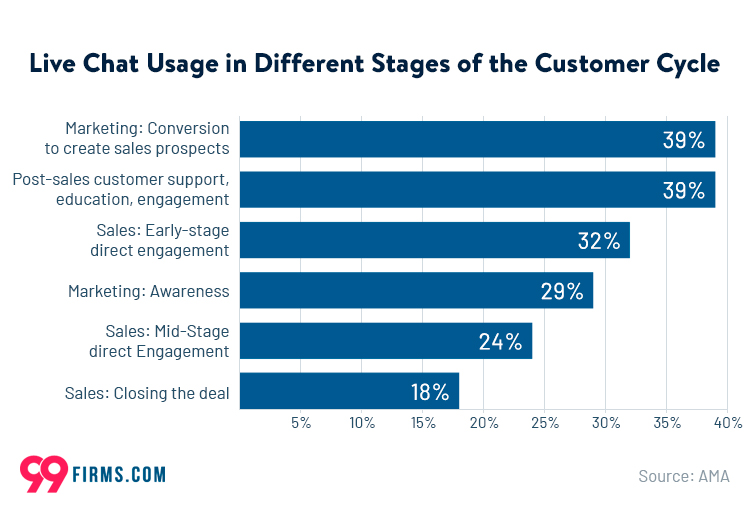
Make sure that your live chat widget is visible on every page while remaining unobtrusive, so as not to distract customers from their shopping experience. It’s also important to make sure your live chat app is optimized for mobile browsing as well as desktop browsing, as an increasing number of online shoppers are now making purchases on their mobile devices.
3. Don’t Leave Your Customers Waiting
If a customer has opted to use live chat, chances are it’s because they want an answer quickly to help them solve their query. If you leave them waiting for a response for too long, they may lose patience, and lose interest in their purchase.
It’s important to ensure you have the facilities to provide rapid responses to live chat requests. This means having enough live agents to meet demand, or having a suitable chatbot in place to make sure no requests go unanswered.
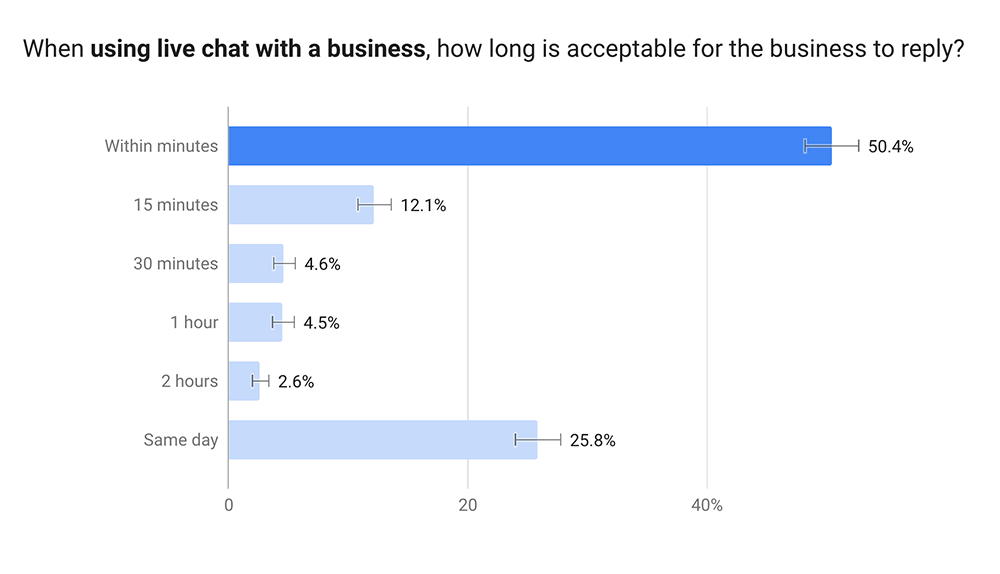
Over half of respondents surveyed about their live chat experiences expected a response within minutes. If your customer service teams can’t provide a suitable response time, it could be time to reconsider how your contact center is structured.
4. Make Use of Chatbots
Chatbots are pieces of software that are designed to replicate human interactions. They use natural language processing (NLP) to understand and respond to messages accordingly.
They can be an invaluable asset to any ecommerce store’s live chat function. They can help dramatically reduce wait times as they can respond instantly to any customer queries.
Even the most basic chatbots can present visitors with a list of predetermined questions, allowing them to narrow down the query, or gather information ready for a live agent to take over once one is available.
Contemporary chatbots can evolve beyond reacting to queries. Emphasizing a contextual chatbot approach, these AI-driven entities don’t just provide generic answers but tailor their responses based on the conversation’s context. Integrating a contextual response rephraser enhances customer interactions, leading to more meaningful communication and enhancing overall user satisfaction.
Smart chatbots can go even further, using artificial intelligence (AI) to understand what customers are trying to ask for, and search relevant data and knowledge bases to provide a meaningful answer.
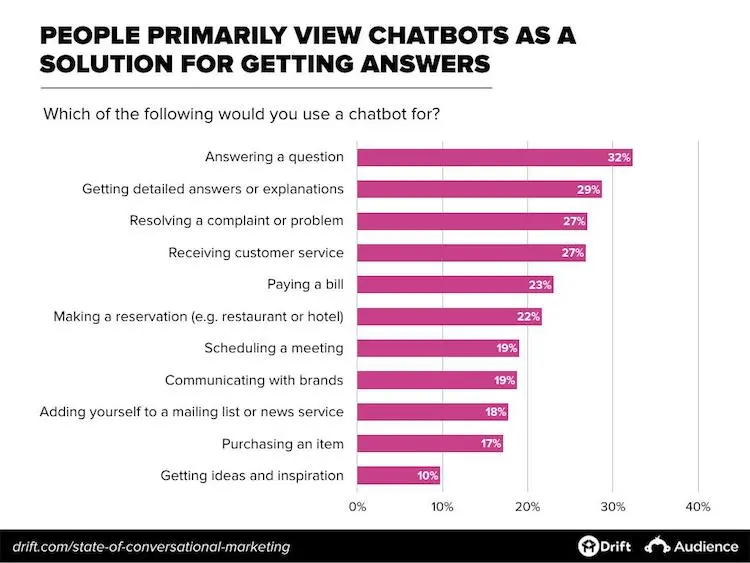
Using chatbots not only reduces wait times for customers, but also helps to reduce the workload for contact center agents. By using chatbots for simple tasks such as data collection, agents can focus their time on more difficult queries.
Chatbots can also be used to provide a 24/7 customer service experience. Customers are able to access live chat, even when no agents are available. At the very least, the chatbot can gather information and advise that an agent will be in touch when normal service hours resume.
5. Use Chat History
It’s important to make chat histories available to your customer service agents. This means that customers don’t have to waste time repeating their questions over and over again to different agents.
Being able to draw upon chat histories means that agents can quickly bring themselves up to speed on the customer’s problem, and can avoid recommending solutions that have already been attempted, speeding up the customer service process as a result.
Keeping information from chat histories will also help when it comes to coaching for your contact center, as interactions can be reviewed with agents to look for learning opportunities.
6. Be Visual
‘Live chat’ may sound like a purely text based medium, with website visitors and agents solely exchanging written communication, but that doesn’t always have to be the case.

Some chats may require a more visual approach. In these instances, it can be helpful to show photographs of the product being discussed in order to better highlight what you’re trying to describe. If you’re providing technical support, a series of images indicating what steps to take to attempt a fix can really speed up the resolution process.
It may even be appropriate to share video clips. If there are common questions about certain products or features, having these visual aids prepared and ready to send can save a lot of time when dealing with recurrent queries.
7. Use Live Chat to Collect Information
Live chat can be a great way to capture information from your customers, both to help with customer service and to generate leads.
In a customer service environment, a form can be used at the start of a live chat session to gather any relevant information the agent may need, such as order numbers or contact details. By automating this process, the live agent can save time that would be spent gathering these details, and can immediately look up the customer’s account and begin to help with their query.
In a sales environment, live chat can be used to gather customer details in order to capture them as leads. By asking visitors to opt in to further communication, you can add them to your mailing lists, and target them with specific communications based on their interaction over live chat.
This is best done at the end of a live chat session, after the visitor’s query has been solved to a satisfactory standard. The information can then be added to your customer relationship management (CRM) software.
8. Use Knowledge Bases
Making a strong knowledge base available on your website can be a great asset in helping your customers find the answers to any questions they may have themselves. You can take this a step further by integrating your knowledge base with your live chat.
Chatbots can direct customers to an FAQ section where they may be able to find the help they’re looking for. Smart chatbots may be able to reduce response times by searching the knowledge base themselves and providing the answer, without a live agent needing to get involved.
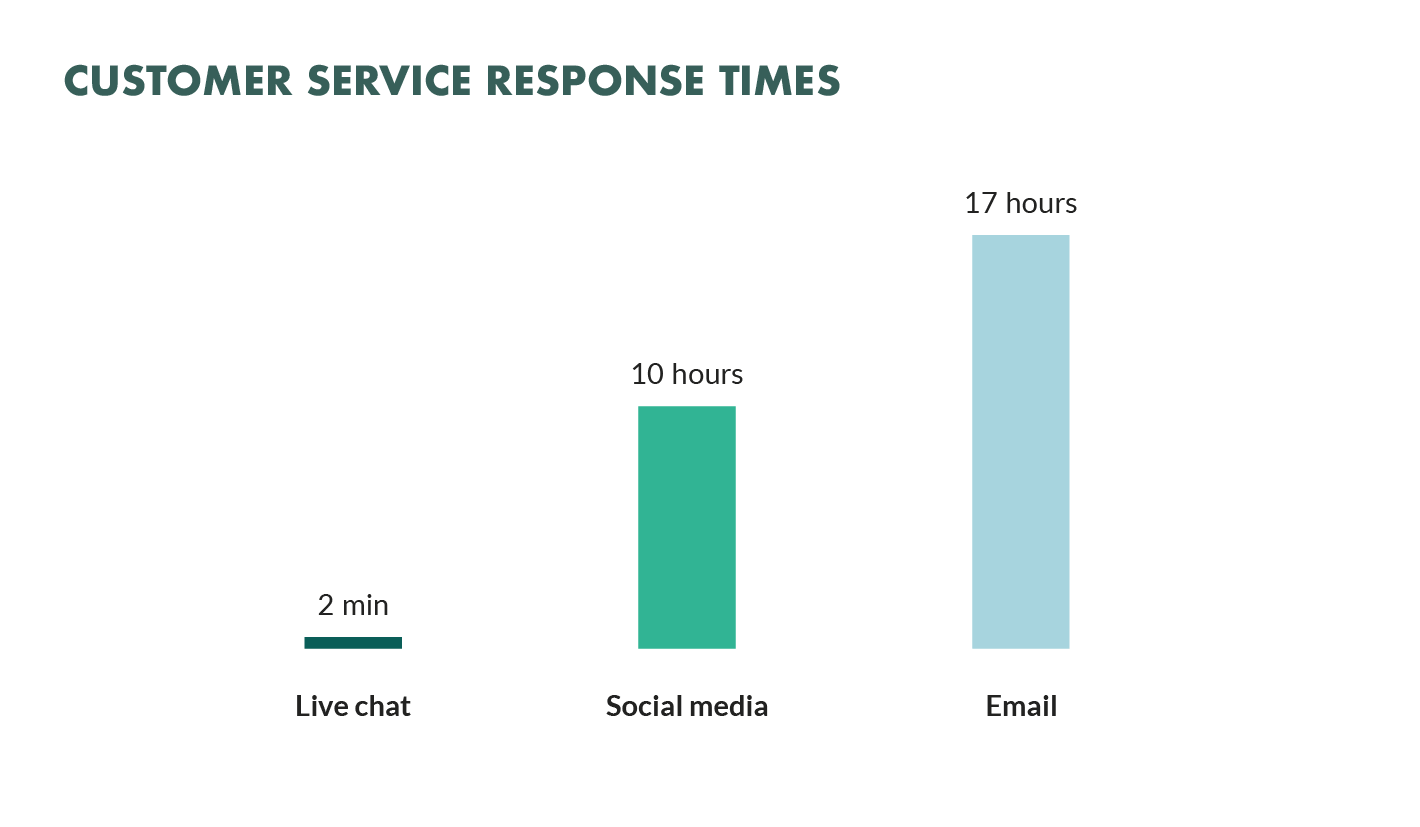
It’s important to make sure visitors can get in touch with a live agent when they feel it’s necessary, as there will be times when a chatbot will not suffice, and customers may feel they are going around in circles.
9. Use Carefully Crafted Templates
Chat templates are efficient and increase response times. However, it’s important to strike a balance between providing quick customer service and providing effective customer service. Templates that sound too scripted can come across impersonal, and are unlikely to result in high response rates.
You should give agents the ability to search through templates, and adjust them as necessary before sending them. This will ensure that what is being communicated to the visitor is relevant, and sounds natural in the context of the conversation.
Make sure that templates are clearly labeled so they can be searched for quickly and easily, and keep them updated so that they fit the most common queries.
10. Make Improvements Based on Your Insights from Chat
For every one person who uses your live chat to ask a question, there are probably a dozen others who have wanted an answer to the question, but did not have the time or the will to ask it.
By paying close attention to the most popular queries you receive over live chat, you can identify pain points on your website that may be preventing you maximizing your sales.
For example, if you see an increase in the number of questions about comparisons between different products, it could be worth investing time in making a comparison feature for your website.
If you’re a telecommunications provider and are getting a lot of questions about, for example, the purpose of a frame relay, or VPC meaning, you could write a blog post that explains their function in more detail.
There are a variety of other ways to gather insights from live chat. You could use a post-chat or hubspot survey to gain feedback about your website, products, or even the live chat function itself.
Get Chatting
Now that you’ve discovered the benefits live chat can bring to your ecommerce store, it’s time to get started with implementing it.
Remember to make live chat available across your website, and have it properly manned by experienced and knowledgeable customer service agents: it’s just as important as your telephone customer service!
Investigate how chatbots can benefit your brand, and learn from the data and insights you gather in your chat windows.
So what are you waiting for? Get chatting, and see how much of a difference live chat can make for your customers, and your profits!






![Top 20+ Must-have Shopify Apps for 2025 [Free & Paid] - Mageplaza](https://cdn2.mageplaza.com/media/blog/must-have-shopify-apps/top-must-have-shopify-apps.png)
![[2025 Updates] Top 10+ Upsell Apps for Shopify - Mageplaza](https://cdn2.mageplaza.com/media/blog/best-upsell-shopify-app/cover.png)